Related Research Articles

Insects in the family Tettigoniidae are commonly called katydids, or bush crickets. They have previously been known as "long-horned grasshoppers". More than 6,400 species are known. Part of the suborder Ensifera, the Tettigoniidae are the only extant (living) family in the superfamily Tettigonioidea.
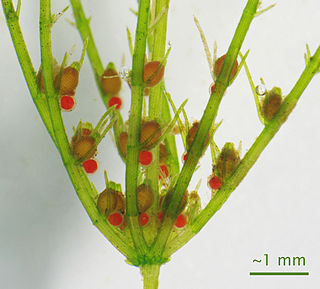
A sex organ is any part of an animal or plant that is involved in sexual reproduction. The reproductive organs together constitute the reproductive system. In animals, the testis in the male, and the ovary in the female, are called the primary sex organs. All others are called secondary sex organs, divided between the external sex organs—the genitals or genitalia, visible at birth in both sexes—and the internal sex organs.

The ovipositor is a tube-like organ used by some animals, especially insects, for the laying of eggs. In insects, an ovipositor consists of a maximum of three pairs of appendages. The details and morphology of the ovipositor vary, but typically its form is adapted to functions such as preparing a place for the egg, transmitting the egg, and then placing it properly. For most insects, the organ is used merely to attach the egg to some surface, but for many parasitic species, it is a piercing organ as well.
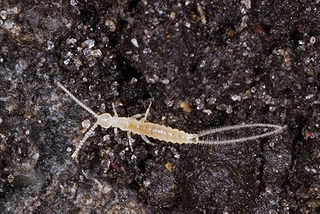
The order Diplura is one of three orders within the class Entognatha. The name "diplura", or "two tails", refers to the characteristic pair of caudal appendages or filaments at the terminal end of the body.

Thelyphonida is an arachnid order comprising invertebrates commonly known as whip scorpions or vinegaroons. They are often called uropygids in the scientific community based on an alternative name for the order, Uropygi. The name "whip scorpion" refers to their resemblance to true scorpions and possession of a whiplike tail, and "vinegaroon" refers to their ability when attacked to discharge an offensive, vinegar-smelling liquid, which contains acetic acid.

A spermatophore or sperm ampulla is a capsule or mass containing spermatozoa created by males of various animal species, especially salamanders and arthropods, and transferred in entirety to the female's ovipore during reproduction. Spermatophores may additionally contain nourishment for the female, in which case it is called a nuptial gift, as in the instance of bush crickets. In the case of the toxic moth Utetheisa ornatrix, the spermatophore includes sperm, nutrients, and pyrrolizidine alkaloids which prevent predation because it is poisonous to most organisms. However, in some species such as the Edith's checkerspot butterfly, the "gift" provides little nutrient value. The weight of the spermatophore transferred at mating has little effect on female reproductive output.

Ensifera is a suborder of insects that includes the various types of crickets and their allies including: true crickets, camel crickets, bush crickets or katydids, grigs, weta and Cooloola monsters. This and the suborder Caelifera make up the order Orthoptera. Ensifera is believed to be a more ancient group than Caelifera, with its origins in the Carboniferous period, the split having occurred at the end of the Permian period. Unlike the Caelifera, the Ensifera contain numerous members that are partially carnivorous, feeding on other insects, as well as plants.

Internal fertilization is the union of an egg and sperm cell during sexual reproduction inside the female body. Internal fertilization, unlike its counterpart, external fertilization, brings more control to the female with reproduction. For internal fertilization to happen there needs to be a method for the male to introduce the sperm into the female's reproductive tract.

The Archaeognatha are an order of apterygotes, known by various common names such as jumping bristletails. Among extant insect taxa they are some of the most evolutionarily primitive; they appeared in the Middle Devonian period at about the same time as the arachnids. Specimens that closely resemble extant species have been found as both body and trace fossils in strata from the remainder of the Paleozoic Era and more recent periods. For historical reasons an alternative name for the order is Microcoryphia.
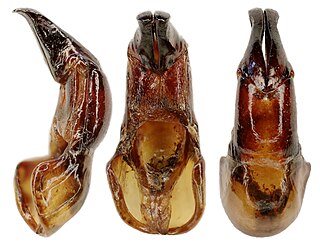
An aedeagus is a reproductive organ of male arthropods through which they secrete sperm from the testes during copulation with a female. It can be thought of as the insect equivalent of a mammal's penis, though the comparison is fairly loose given the greater complexity of insect reproduction. The term is derived from Ancient Greek αἰδοῖα and ἀγός. It is pronounced or.
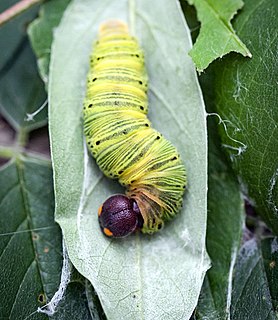
Epargyreus clarus, the silver-spotted skipper, is a butterfly of the family Hesperiidae. It is claimed to be the most recognized skipper in North America. E. clarus occurs in fields, gardens, and at forest edges and ranges from southern Canada throughout most of the United States to northern Mexico, but is absent in the Great Basin and western Texas.
The reproductive system of an organism, also known as the genital system, is the biological system made up of all the anatomical organs involved in sexual reproduction. Many non-living substances such as fluids, hormones, and pheromones are also important accessories to the reproductive system. Unlike most organ systems, the sexes of differentiated species often have significant differences. These differences allow for a combination of genetic material between two individuals, which allows for the possibility of greater genetic fitness of the offspring.
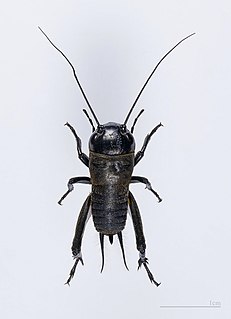
Crickets are Orthopteran insects which are related to bush crickets, and, more distantly, to grasshoppers. In older literature, such as Imms, "crickets" were placed at the family level, but contemporary authorities including Otte now place them in the superfamily Grylloidea. The word has been used in combination to describe more distantly related taxa in the suborder Ensifera, such as king crickets and mole crickets.
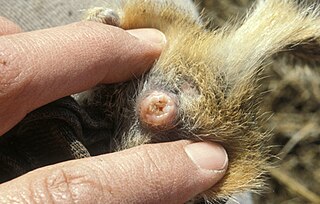
A mating plug, also known as a copulation plug, sperm plug, vaginal plug, or sphragis, is gelatinous secretion used in the mating of some species. It is deposited by a male into a female genital tract, such as the vagina, and later hardens into a plug or glues the tract together. While females can expel the plugs afterwards, the male's sperm still gets a time advantage in getting to the egg, which is often the deciding factor in fertilization.

The coconut crab is a species of terrestrial hermit crab, also known as the robber crab or palm thief. It is the largest terrestrial arthropod in the world, with a weight of up to 4.1 kg (9 lb). It can grow to up to 1 m in length from each tip to tip of the leg. It is found on islands across the Indian Ocean, and parts of the Pacific Ocean as far east as the Gambier Islands and Pitcairn Islands, similar to the distribution of the coconut palm; it has been extirpated from most areas with a significant human population, including mainland Australia and Madagascar. Coconut crabs also live off the coast of Africa near Zanzibar.

The reproductive system of gastropods varies greatly from one group to another within this very large and diverse taxonomic class of animals. Their reproductive strategies also vary greatly, see Mating of gastropods.
An intromittent organ is a general term for an external organ of a male organism that is specialized to deliver sperm during copulation. Intromittent organs are found most often in terrestrial species, as most non-mammalian aquatic species fertilize their eggs externally, although there are exceptions. For many species in the animal kingdom, the male intromittent organ is a hallmark characteristic of internal fertilization.

The study of the genitalia of Lepidoptera is important for Lepidoptera taxonomy in addition to development, anatomy and natural history. The genitalia are complex and provide the basis for species discrimination in most families and also in family identification. The genitalia are attached onto the tenth or most distal segment of the abdomen. Lepidoptera have some of the most complex genital structures in the insect groups with a wide variety of complex spines, setae, scales and tufts in males, claspers of different shapes and different modifications of the ductus bursae in females.
A nuptial gift is a nutritional gift given by one partner in some animals' sexual reproduction practices.
Spermozoros impolitus is a species of insect in the order Zoraptera.
References
- ↑ Thomas, Daniel; Leal, Sandra; Conway, Hugh (2014). "Copula Duration, Insemination, and Sperm Allocation in Anastrepha ludens (Diptera: Tephritidae)". Annals of the Entomological Society of America. 107 (4): 858–865. doi: 10.1603/AN14015 . S2CID 86203506.